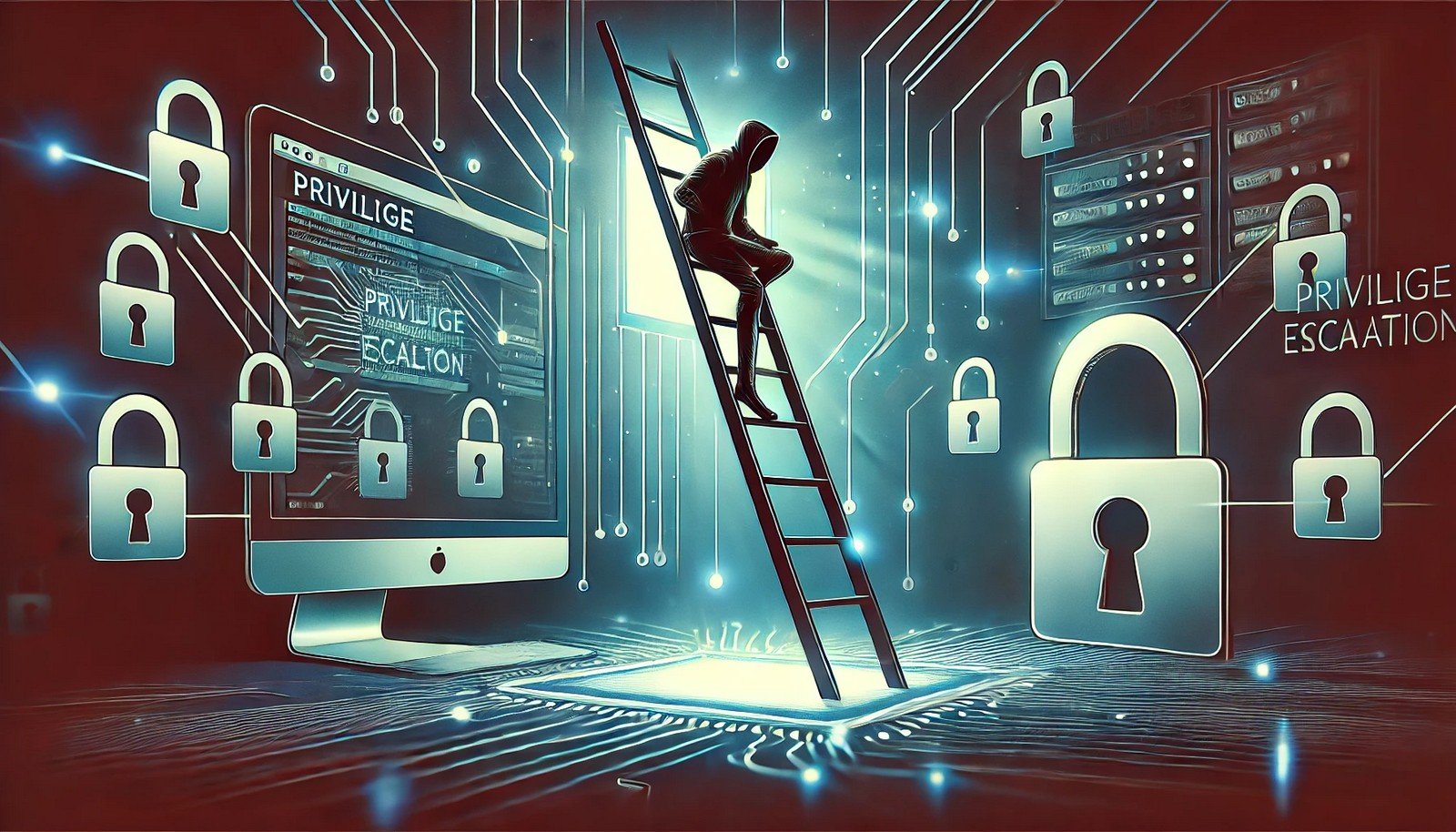Privilege Escalation

(Representational Image | Source: Dall-E)
Quick Navigation:
- Privilege Escalation Definition
- Privilege Escalation Explained Easy
- Privilege Escalation Origin
- Privilege Escalation Etymology
- Privilege Escalation Usage Trends
- Privilege Escalation Usage
- Privilege Escalation Examples in Context
- Privilege Escalation FAQ
- Privilege Escalation Related Words
Privilege Escalation Definition
Privilege escalation is a security vulnerability that occurs when a user gains unauthorized access to higher privileges within a system. It allows attackers or unauthorized users to exploit system weaknesses, gaining elevated access to sensitive data, executing commands with admin rights, or bypassing security restrictions. There are two primary types: vertical privilege escalation (gaining higher-level privileges) and horizontal privilege escalation (accessing another user's privileges without increasing privilege level). Techniques for privilege escalation include exploiting software bugs, misconfigurations, weak permissions, and credential theft.
Privilege Escalation Explained Easy
Imagine you have a school library card that only lets you borrow one book at a time, but your teacher can borrow ten books. If you somehow trick the system into thinking you are a teacher, you could borrow ten books instead of one. That’s privilege escalation—finding a way to gain more access than you should have. In computers, hackers or users can trick the system into giving them admin powers, allowing them to control things they normally shouldn't.
Privilege Escalation Origin
Privilege escalation has been a concern since the early days of multi-user operating systems in the 1960s and 1970s. As security measures evolved, attackers continued to find new ways to bypass them, leading to a constant battle between security experts and cybercriminals.
Privilege Escalation Etymology
The term comes from the combination of "privilege," meaning special rights or access within a system, and "escalation," meaning an increase or elevation. Together, it describes the act of gaining unauthorized higher access within a system.
Privilege Escalation Usage Trends
Privilege escalation attacks have increased significantly with the rise of cloud computing and remote work. Attackers often use privilege escalation as part of a multi-stage cyberattack, gaining initial access through phishing or malware before escalating privileges to take full control. Organizations now focus on advanced monitoring and privilege management to combat these threats.
Privilege Escalation Usage
- Formal/Technical Tagging:
- Cybersecurity
- Ethical Hacking
- Penetration Testing
- System Administration
- Information Security - Typical Collocations:
- "privilege escalation vulnerability"
- "mitigating privilege escalation risks"
- "privilege escalation attack detected"
- "zero-day exploit leads to privilege escalation"
Privilege Escalation Examples in Context
- A hacker exploits a vulnerability in outdated software to gain administrative access on a company's server.
- A system administrator mistakenly grants full access to a low-level user, leading to accidental privilege escalation.
- Malware uses a privilege escalation exploit to gain root access on a victim's device, allowing it to install itself permanently.
Privilege Escalation FAQ
- What is privilege escalation?
Privilege escalation is the process of gaining unauthorized higher access rights within a system. - What are the types of privilege escalation?
The two main types are vertical (gaining higher privileges) and horizontal (accessing another user's privileges). - How do attackers achieve privilege escalation?
They exploit software vulnerabilities, weak passwords, misconfigured permissions, and credential theft. - What are some real-world examples of privilege escalation?
Malware gaining admin rights, users exploiting system misconfigurations, and hackers using unpatched software vulnerabilities. - How can privilege escalation be prevented?
By applying security patches, using the principle of least privilege, implementing multi-factor authentication, and monitoring access logs. - Why is privilege escalation a serious security risk?
It allows attackers to take full control of systems, steal sensitive data, and install malicious software. - What is the principle of least privilege (PoLP)?
It’s a security practice where users and applications receive only the minimum level of access necessary to perform their tasks. - How do hackers use privilege escalation in cyberattacks?
They first gain limited access to a system and then escalate privileges to take complete control. - Can privilege escalation be detected?
Yes, with security monitoring tools that track unusual access patterns and privilege changes. - What tools help prevent privilege escalation?
Tools like Microsoft Defender, SIEM solutions, privilege access management (PAM) systems, and endpoint protection software.
Privilege Escalation Related Words
- Categories/Topics:
- Cybersecurity
- Information Security
- Ethical Hacking
- Access Control
- System Security
Did you know?
In 2019, a privilege escalation flaw in Windows (CVE-2019-0859) allowed attackers to gain full control over systems by exploiting a kernel vulnerability. Microsoft quickly patched the issue, but it was actively used by cybercriminals before the fix was available.
PicDictionary.com is an online dictionary in pictures. If you have questions or suggestions, please reach out to us on WhatsApp or Twitter.Authors | Arjun Vishnu | @ArjunAndVishnu

I am Vishnu. I like AI, Linux, Single Board Computers, and Cloud Computing. I create the web & video content, and I also write for popular websites.
My younger brother, Arjun handles image & video editing. Together, we run a YouTube Channel that's focused on reviewing gadgets and explaining technology.



Comments powered by CComment